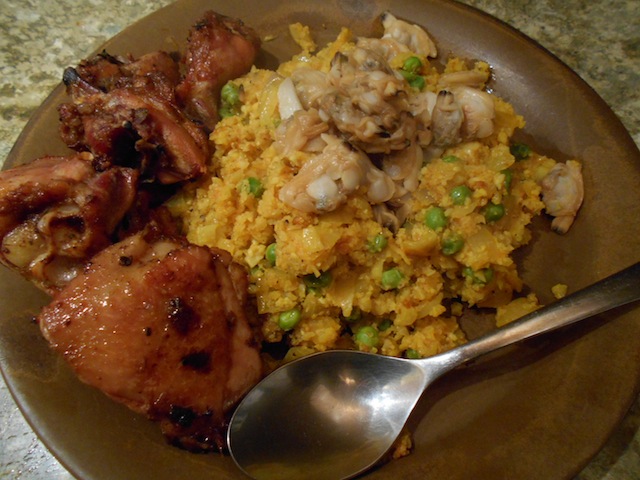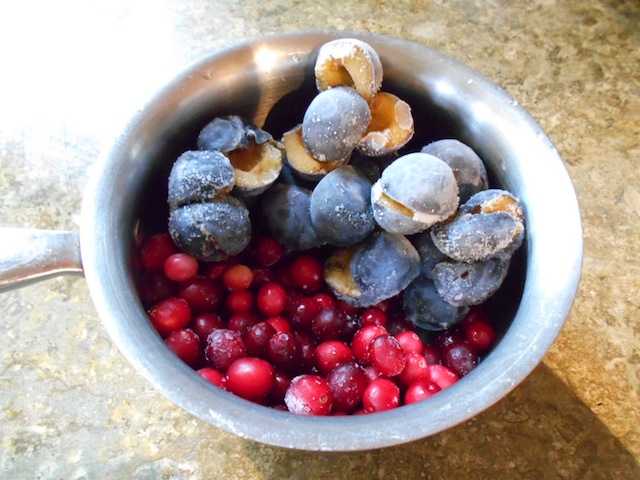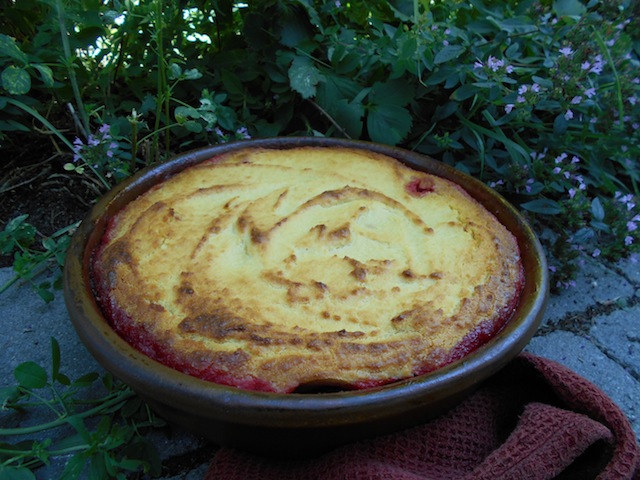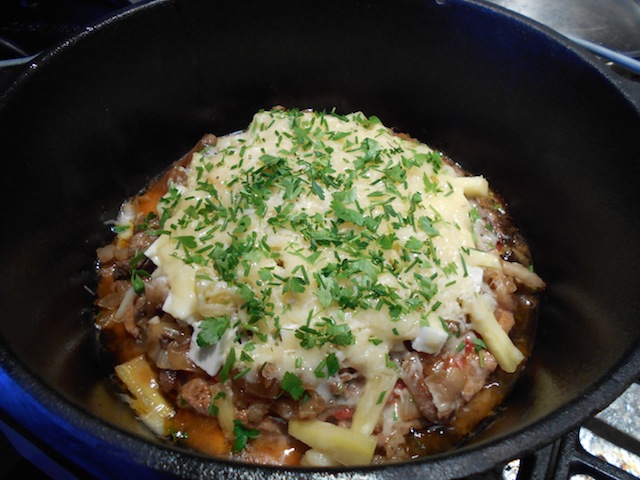
This Paleo Paella is grain-free. The rice portion of this dish is replaced with cauliflower. This version is nice for people looking to avoid grains or wanting to get more vegetables into their diet.
This recipe is safe for someone on the Specific Carbohydrate Diet, GAPS or the modified paleo diet.
Oven Baked Chicken
1 pastured whole chicken, cut into small pieces
1/4c organic olive oil
1tsp sea salt
1tsp organic black peppercorns, freshly ground
2tsp organic smoked paprika
Cut up the whole chicken into small pieces. (Reserve the breast meat for other meals, if desired.) Use a clever and mallet to cut through the bones. If you don’t know how to cut up a chicken please refer to The Joy of Cooking or watch a video on the internet. Coat the chicken pieces with the olive oil. While stirring the chicken pieces sprinkle with the spice mixture. Let the chicken pieces marinate in the spice mixture for one hour. Spread the chickens pieces on a glass baking tray and bake at 300F for 45 minutes. Turn the pieces and remove the chicken juices and reserve for the paella. Cook the chicken pieces for another 30 minutes or until done.
Cauliflower Paella
1/3c organic olive oil
2 medium organic onions, chopped
1tsp sea salt
1 organic cauliflower head, finely minced
1tsp fresh rosemary, finely minced
3-4 organic whole Roma tomatoes, frozen
1T turmeric root, freshly ground
1T palm oil
1tsp organic black peppercorns, freshly ground
2-4 organic garlic cloves, finely sliced
chicken juices
1c organic peas, frozen
1c fresh clams, mussels or shrimp (optional)
Finely mince the cauliflower in a food processor. In a deep, large fry pan, saut? the onions in sea salt and olive oil until lightly browned. Add the cauliflower, rosemary, tomatoes, turmeric and palm oil and cook until the tomatoes unfreeze. Remove the tomato skins, if desired. Stir in the ground peppercorns, garlic and chicken juices. Remove from the heat until the chicken is ready. Add the peas and optional seafood and reheat the paella just before serving with the chicken pieces.





